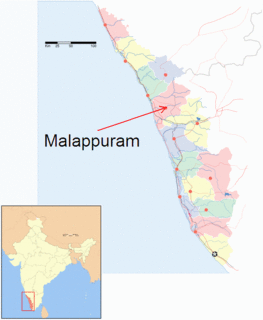| Repetobasidiopsis | |
|---|---|
| Scientific classification | |
| Kingdom: | Fungi |
| Division: | Basidiomycota |
| Class: | Agaricomycetes |
| Order: | Polyporales |
| Family: | incertae sedis |
| Genus: | Repetobasidiopsis Dhingra & Avn.P.Singh (2008) |
| Type species | |
| Repetobasidiopsis grandispora Dhingra & Avn.P.Singh (2008) | |
Repetobasidiopsis is a fungal genus of unknown familial placement in the order Polyporales. It contains the crust fungus species Repetobasidiopsis grandispora. The genus and species were first proposed in 2006, but two different herbaria were designated for the types of the two new species described in that publication, in contravention of the rules for describing new species. The specific epithet grandisporus refers to the large-sized spores in comparison with the morphologically similar genus Repetobasidiellum . The generic name Repetobasidiopsis alludes to the proliferating, or repeating, basidia. [1] Two years later the genus was published validly. [2]
A genus is a taxonomic rank used in the biological classification of living and fossil organisms, as well as viruses, in biology. In the hierarchy of biological classification, genus comes above species and below family. In binomial nomenclature, the genus name forms the first part of the binomial species name for each species within the genus.
Family is one of the eight major hierarchical taxonomic ranks in Linnaean taxonomy; it is classified between order and genus. A family may be divided into subfamilies, which are intermediate ranks between the ranks of family and genus. The official family names are Latin in origin; however, popular names are often used: for example, walnut trees and hickory trees belong to the family Juglandaceae, but that family is commonly referred to as being the "walnut family".

The Polyporales are an order of about 1800 species of fungi in the division Basidiomycota. The order includes some polypores as well as many corticioid fungi and a few agarics. Many species within the order are saprotrophic, most of them wood-rotters. Some genera, such as Ganoderma and Fomes, contain species that attack living tissues and then continue to degrade the wood of their dead hosts. Those of economic importance include several important pathogens of forest and amenity trees and a few species that cause damage by rotting structural timber. Some of the Polyporales are commercially cultivated and marketed for use as food items or in traditional Chinese medicine.
Repetobasidiopsis grandispora is found in Eastern Himalaya, India, where it grows on decaying bamboo. It has a monomitic hyphal system with generative hyphae measuring up to 2.3 μm. Its spores are ellipsoidal, non-amyloid, and measure 10–14 by 4.0–5.8 μm. [1]

The bamboos are evergreen perennial flowering plants in the subfamily Bambusoideae of the grass family Poaceae. The word "bamboo" comes from the Kannada term bambu (ಬಂಬು), which was introduced to English through Indonesian and Malay.

A hypha is a long, branching filamentous structure of a fungus, oomycete, or actinobacterium. In most fungi, hyphae are the main mode of vegetative growth, and are collectively called a mycelium.

The micrometre or micrometer, also commonly known by the previous name micron, is an SI derived unit of length equalling 1×10−6 metre ; that is, one millionth of a metre.














